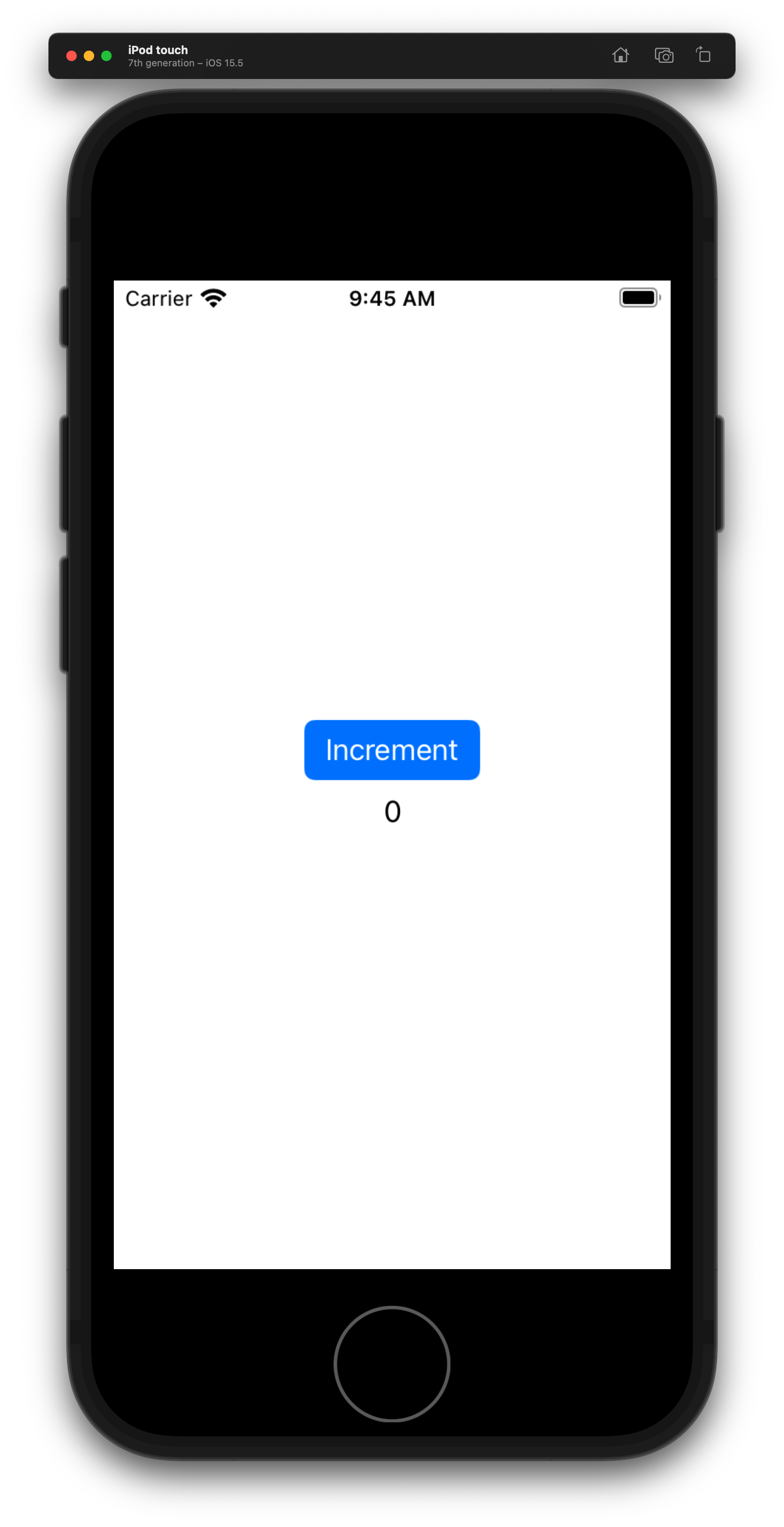In this post, we’ll learn how we can add unit tests to private properties without compromising their access level.
You can download the Example project here.
The project
We’ll use a really simple view, that only contains one button and one label. Tapping on the button increases the number on the label. We want to cover that behavior with unit tests.

import UIKit
final class InitialViewController: UIViewController {
@IBOutlet private weak var incrementButton: UIButton!
@IBOutlet private weak var valueLabel: UILabel!
private var storedValue = 0
@IBAction private func didTapIncrementButton(_ sender: Any) {
storedValue += 1
valueLabel.text = storedValue.description
}
}
The problem
So we could write something like this:
import XCTest
@testable import MirrorObjectExample
final class InitialViewControllerTests: XCTestCase {
func testLabelInitialValue() {
// Given
let sut = InitialViewController()
let expectedValue = "0"
// Then
XCTAssertEqual(sut.valueLabel.text, expectedValue)
}
}
But then we get the following error:

A quick fix would be to change the access modifier of the label in the InitialViewController. But we don’t want to compromise the access level just for the sake of testing.
Mirror
Instead, we will rely on Reflection.
By “reflecting” our classes we will be able to add unit tests to the private properties.
MirrorObject helper class
We can create a helper class that will act as a wrapper for Swift’s Mirror struct.
/// This class is used as the base for accessing private properties of objects.
///
/// Usage:
/// - Create a new child class for the object you want to test
/// - Add the properties using the same name as in the original implementation.
class MirrorObject {
private let mirror: Mirror
init(reflecting: Any) {
mirror = Mirror(reflecting: reflecting)
}
func extract<Class>(variableName: StaticString = #function) -> Class {
extract(variableName: variableName, mirror: mirror)
}
private func extract<Class>(variableName: StaticString, mirror: Mirror) -> Class {
guard let descendant = mirror.descendant("\(variableName)") as? Class else {
guard let superclassMirror = mirror.superclassMirror else {
fatalError("Expected Mirror for superclass")
}
return extract(variableName: variableName, mirror: superclassMirror)
}
guard let result: Class = try? XCTUnwrap(descendant) else {
fatalError("Expected unwrapped result")
}
return result
}
}
Once we have our base class, the usage is really simple:
final class InitialViewControllerMirror: MirrorObject {
// We create a custom init that calls super with the custom object
init(reflecting vc: InitialViewController) {
super.init(reflecting: vc)
}
// And then we just declare the properties we want to test:
var valueLabel: UILabel! { extract() }
var incrementButton: UIButton! { extract() }
}
Testing
Now, we can go back to our test, and use our new Mirror class:
func testLabelInitialValue() {
// Given
let storyboard = UIStoryboard(name: "Main", bundle: nil)
guard let sut = storyboard
.instantiateViewController(withIdentifier: "InitialViewController") as? InitialViewController else {
XCTFail()
return
}
_ = sut.view
let mirror = InitialViewControllerMirror(reflecting: sut)
let expectedValue = "0"
// Then
XCTAssertEqual(mirror.valueLabel.text, expectedValue)
}
We can run the test and it should pass correctly ✅.
More Testing
We now want to test the button’s tap behavior. We also want to move the initial shared configuration for all the tests to the setUp method:
import XCTest
@testable import MirrorObjectExample
final class InitialViewControllerTests: XCTestCase {
private var sut: InitialViewController!
private var mirror: InitialViewControllerMirror!
override func setUp() {
super.setUp()
let storyboard = UIStoryboard(name: "Main", bundle: nil)
sut = storyboard.instantiateViewController(withIdentifier: "InitialViewController") as? InitialViewController
_ = sut.view
mirror = InitialViewControllerMirror(reflecting: sut)
}
func testLabelInitialValue() {
// Given
let expectedValue = "0"
// Then
XCTAssertEqual(mirror.valueLabel.text, expectedValue)
}
func testButtonBehavior() {
// Given
let initialValue = "0"
let expectedValueAfterTap = "1"
XCTAssertEqual(mirror.valueLabel.text, initialValue)
// When
mirror.incrementButton.sendActions(for: .touchUpInside)
// Then
XCTAssertEqual(mirror.valueLabel.text, expectedValueAfterTap)
}
}
final class InitialViewControllerMirror: MirrorObject {
// We create a custom init that calls super with the custom object
init(reflecting vc: InitialViewController) {
super.init(reflecting: vc)
}
// And then we just declare the properties we want to test:
var valueLabel: UILabel! { extract() }
var incrementButton: UIButton! { extract() }
}

Now we have unit test coverage for the button action ✅.
I hope you found this article interesting!
.jpeg)